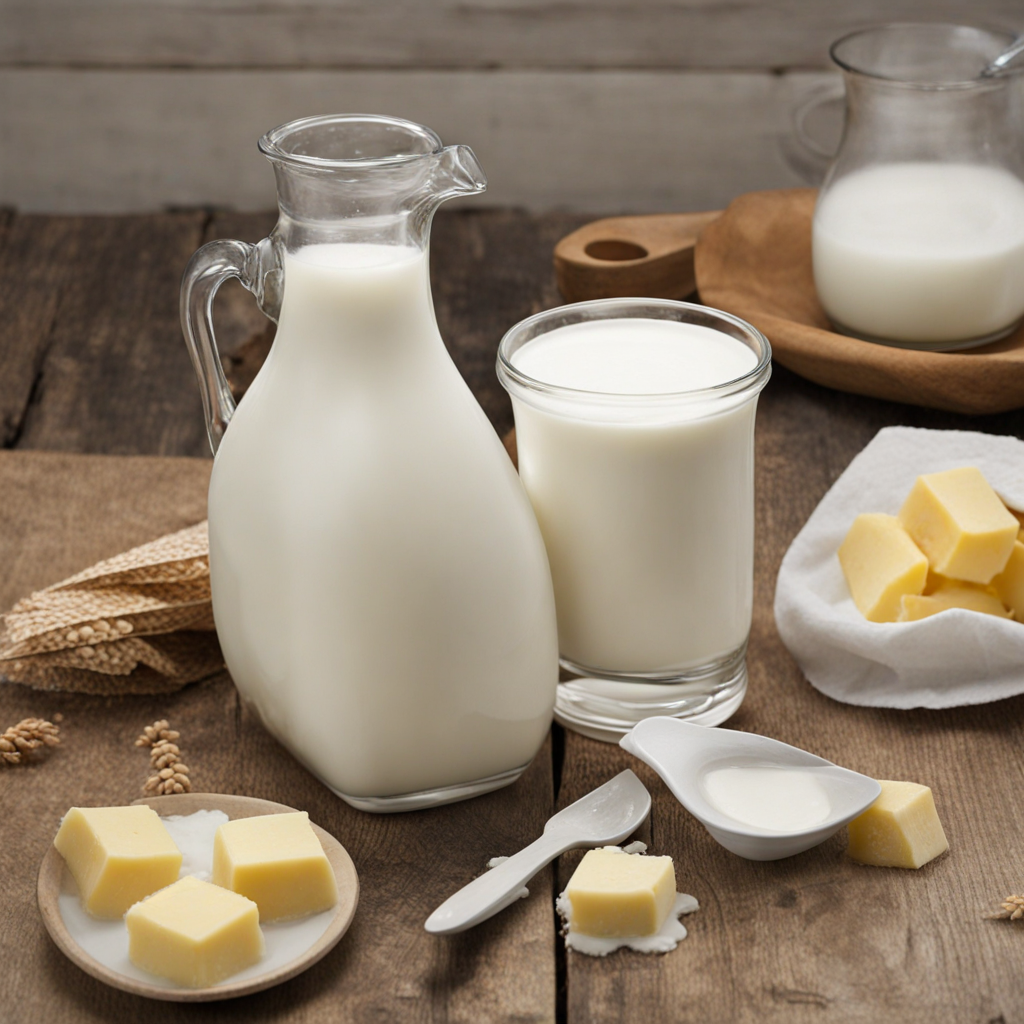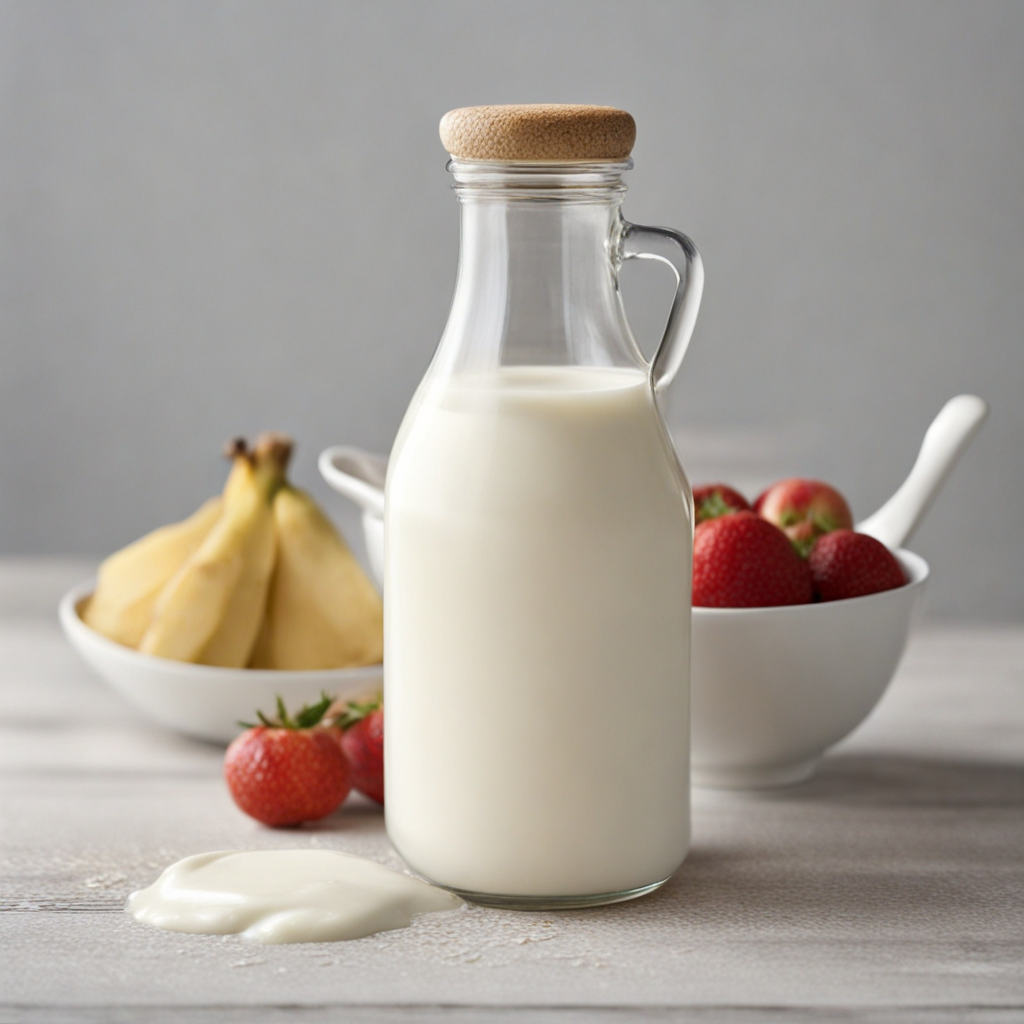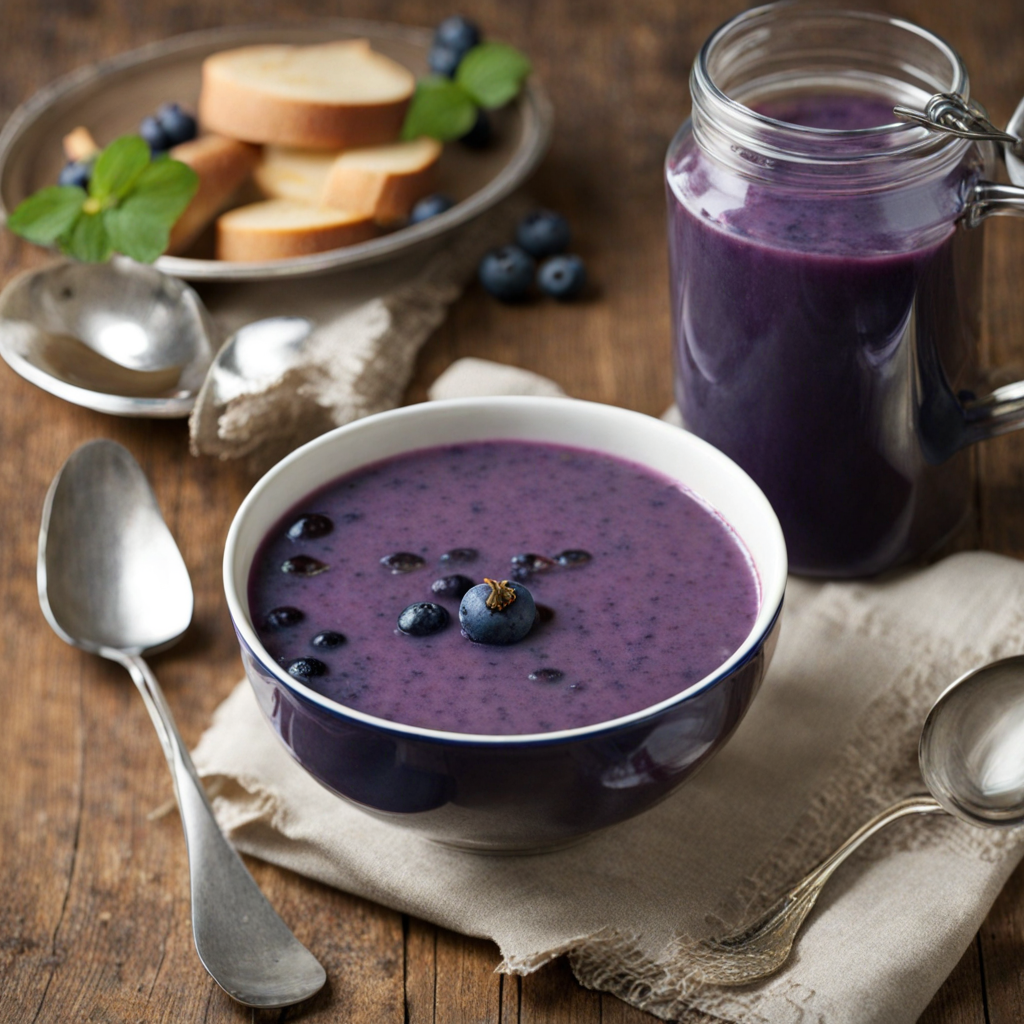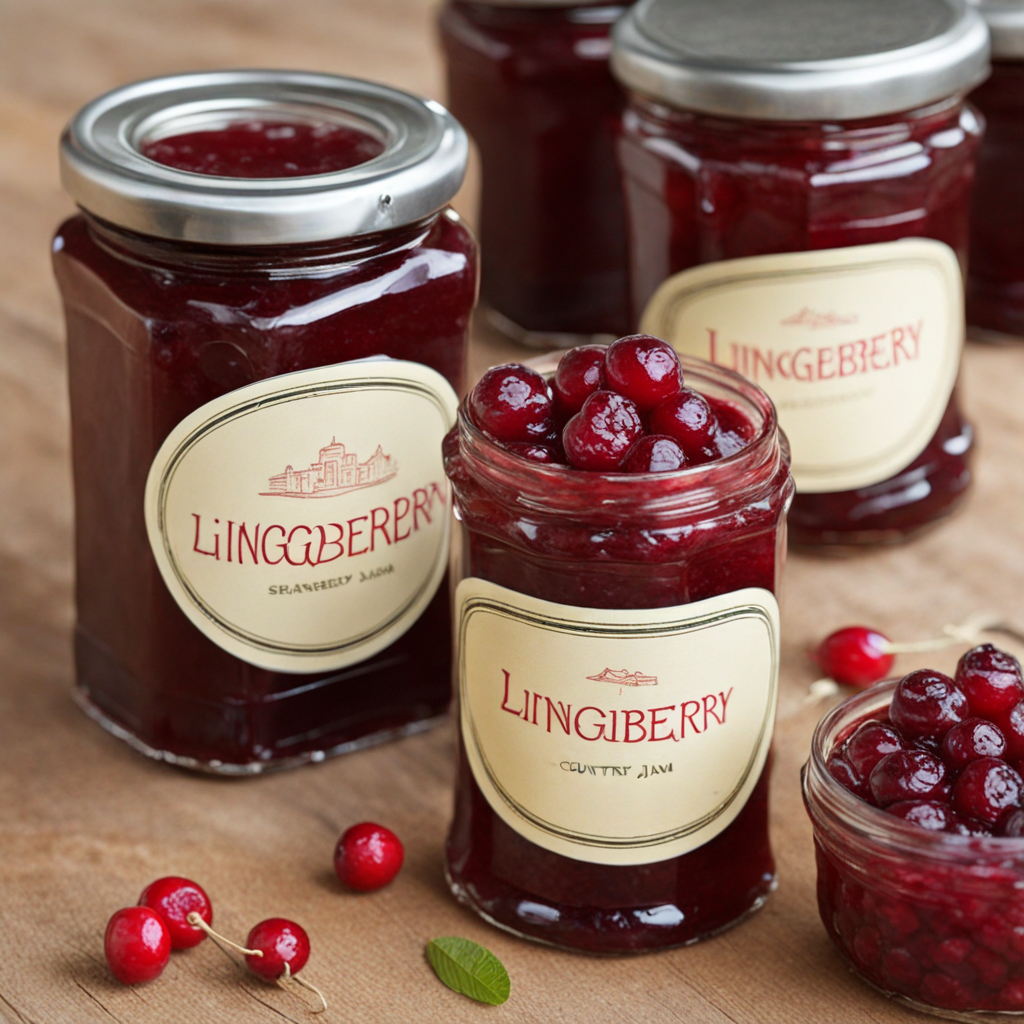Swedish Sour Milk
Swedish Sour Milk, known as "fil" in Sweden, is a traditional dairy product that offers a unique and tangy flavor profile, setting it apart from other fermented milk products. It is made by fermenting pasteurized milk with specific bacterial cultures, resulting in a thick, creamy texture and a pleasantly sour taste. The fermentation process not only enhances the flavor but also enriches the milk with beneficial probiotics, making it a staple in Swedish cuisine for both its health benefits and its deliciously distinct taste. When tasting Swedish Sour Milk, you'll notice its smooth consistency, which is reminiscent of yogurt but with a more pronounced tartness. This delightful sourness can be attributed to the lactic acid produced during fermentation, giving it a refreshing quality that pairs well with a variety of foods. Swedes often enjoy it as a breakfast option, served with fresh berries, granola, or a drizzle of honey. Additionally, it can be used as a versatile ingredient in baking and cooking, adding a depth of flavor to pancakes, dressings, or even marinades. Beyond its flavor, Swedish Sour Milk embodies a sense of tradition and simplicity in Swedish culture. It is often found in homes, where families have their own favorite ways to enjoy it. Whether consumed straight from the carton, mixed into smoothies, or incorporated into traditional dishes, Swedish Sour Milk invites adventurous eaters to explore its creamy, tangy nuances and discover a beloved aspect of Swedish culinary heritage.
How It Became This Dish
The History of Filmjölk: Sweden's Fermented Treasure Filmjölk, a traditional Swedish dairy product, is a staple that holds a special place in the hearts and kitchens of many Swedes. This fermented milk drink, characterized by its creamy texture and slightly tangy flavor, is more than just a food item; it embodies a rich cultural heritage that spans centuries. To truly appreciate filmjölk, one must delve into its origins, cultural significance, and evolution over time. #### Origins and Early Beginnings Filmjölk finds its roots in the ancient practices of fermentation, a technique that dates back thousands of years. The art of fermenting milk can be traced to various cultures around the world, but in Scandinavia, this tradition took on a unique form. It is believed that the Vikings, known for their seafaring and exploration, were among the first to discover the benefits of fermenting milk as a means of preservation. The use of natural bacteria found in the environment transformed fresh milk into a longer-lasting product. The word "filmjölk" itself is derived from two Swedish words: "fil," meaning "film," and "mjölk," meaning "milk." The "film" refers to the thin layer of cream that forms on top of the fermented milk, which is a hallmark of this product. Initially, filmjölk was produced through spontaneous fermentation, relying on the bacteria present in the air and on the surfaces of the containers used for storage. This method resulted in a diverse range of flavors and textures, contributing to the regional variations of the product. #### Cultural Significance In Sweden, filmjölk is more than just a food item; it is a cultural symbol and an integral part of the Swedish diet. Consumed primarily at breakfast or as a snack, it is often enjoyed with a sprinkle of sugar or fresh fruits, making it a nutritious and satisfying option. The health benefits of filmjölk have been recognized for generations; it is rich in probiotics, calcium, and vitamins, promoting gut health and overall well-being. Filmjölk's significance extends beyond its nutritional value. It embodies the Swedish philosophy of "lagom," which translates to "just the right amount." This concept emphasizes moderation and balance in all aspects of life, including diet. Filmjölk represents this philosophy beautifully, as it is a simple yet nourishing food that fits seamlessly into the daily routine of Swedes. Moreover, filmjölk has become a staple during traditional Swedish celebrations and gatherings. It is often served at Midsummer feasts, Christmas breakfasts, and other festive occasions, reinforcing its role as a food that brings people together. The communal aspect of sharing meals, including filmjölk, underscores the importance of family and friendship in Swedish culture. #### Development Over Time Throughout the centuries, the production of filmjölk underwent significant changes, particularly during the 19th and 20th centuries. With the advent of industrialization, traditional methods of food production began to shift. The introduction of pasteurization and commercial dairy farming transformed how filmjölk was made and distributed. While the natural fermentation process was once a household practice, it became increasingly replaced by commercial production methods. In the early 20th century, Swedish dairy farmers began to experiment with commercial cultures of bacteria to create a more uniform product. This innovation led to the establishment of specific strains of bacteria used for filmjölk production today, such as *Lactococcus lactis* and *Lactobacillus acidophilus*. These controlled fermentation processes allowed for greater consistency in flavor and texture, making filmjölk more accessible to a wider audience. Despite these changes, there has been a resurgence of interest in traditional food practices in recent years. As people become more health-conscious and aware of the benefits of probiotics, many Swedes are returning to homemade versions of filmjölk, embracing the artisanal methods of their ancestors. Farmers' markets and local dairies have also seen a revival, offering small-batch, naturally fermented filmjölk that celebrates the diversity of flavors and textures. #### Filmjölk in Contemporary Sweden Today, filmjölk is a ubiquitous part of the Swedish diet, available in nearly every grocery store across the country. It comes in various flavors, including classic, berry-infused, and even spiced versions, catering to diverse tastes. The modern Swedish consumer has embraced this versatile product, incorporating it into smoothies, salad dressings, and even baked goods, showcasing its adaptability. Moreover, filmjölk has gained international recognition, with many food enthusiasts and health-conscious individuals outside of Sweden discovering its delights. The global trend towards fermented foods has propelled filmjölk into the spotlight, allowing it to take its place among other celebrated fermented products like yogurt and kefir. In recent years, the Swedish government has also recognized the importance of traditional foods like filmjölk in promoting cultural heritage and biodiversity. Initiatives to support local dairy farms and promote traditional food practices have been implemented, ensuring that the legacy of filmjölk continues to thrive for generations to come. #### Conclusion Filmjölk is more than just a fermented milk drink; it is a reflection of Sweden's agricultural history, cultural practices, and commitment to health and well-being. From its ancient origins and significance in Swedish tradition to its evolution in the modern food landscape, filmjölk serves as a delicious reminder of the importance of fermentation and the connections it fosters among people. As Sweden continues to celebrate its culinary heritage, filmjölk remains a beloved and iconic part of the Swedish identity, cherished by both young and old alike.
You may like
Discover local flavors from Sweden







